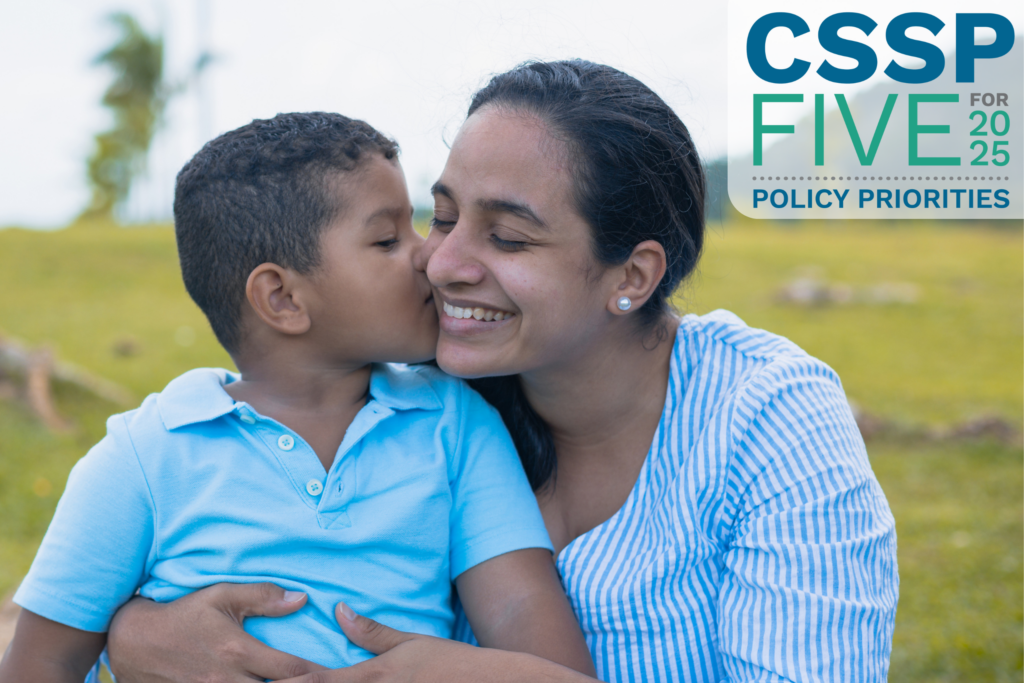In the words of one counselor CSSP interviewed who serves Native American youth, “On my team, I have three native clinicians from the local communities and [culture is] kind of weaved within the clinical approach… [Many young people] don’t have anybody who is knowledgeable about culture or in a position to teach them. Or maybe there’s even emotions around it like shame or, you know, all of the symptoms of that historical trauma…. And so having an opportunity to be taught or to be connected in a way that they weren’t able to access in their own family, that’s a theme that comes up a lot. Just being able to learn how to gather or how to weave or, you know, is like, really powerful for the youth. That comes up over and over again.”
Why Should Services Be Culturally Responsive?
All children, youth, and their families deserve to have the resources they need to thrive in their communities. For these supports to successfully advance well-being for all people, they must reflect the expressed needs of diverse members of the community and respond to the threats they face. For people of color, this means that resources must address the harms of historical and ongoing racism, colonization, and xenophobia. A substantial body of research has confirmed that these forms of discrimination create significant health disparities for people of color by undermining their economic, mental, and physical well-being, including through greater financial precarity, increased substance use, elevated stress, and increased risk of depression, among other challenges. Beyond addressing the reality of these barriers to well-being, effective community resources should build on the community’s assets to strengthen the families who participate in services. As numerous studies have confirmed, these assets include a positive racial and cultural identity, which can mitigate or even protect against the harmful effects of discrimination, and serve as a tool to promote health equity. Ultimately, promoting well-being in a way that respects the diversity of families in the community requires that resources be culturally responsive, meaning they are either designed by and/or for the communities they serve, or are delivered in a manner that is consistent with the values, customs, and self-identified needs of participants.
Unfortunately, as CSSP highlighted in the brief Culture is Healing: Removing the Barriers Facing Providers of Culturally Responsive Services, state and federal policymakers make decisions that create barriers to families accessing culturally responsive supports. When deciding what programs to fund, policymakers increasingly favor those that are designated as “evidence-based programs,” (EBPs) which typically refers to programs and services that have documented positive outcomes in randomized controlled trials and peer-reviewed studies. Historically, these programs have been developed primarily by White researchers with White participants in mind and most are not culturally responsive; by one estimate, 78 percent of evidence-based interventions to promote youth development are not culturally tailored. Moreover, most EBPs do not publish outcome data disaggregated by race or ethnicity. These facts raise serious questions about whether their findings can be generalizable to other populations. Researchers have documented that when services are created without attention to culture and identity, they can be less effective or even outright harmful, making participants feel pathologized and wary of seeking help again. In contrast, programs that do pay attention to cultural needs can be more effective than those that do not. Despite these findings, government bias towards funding EBPs continues to reflect a colorblind, one-size-fits-all approach that invalidates the importance of cultural identity, ignores alternate forms of evidence rooted in community members’ assessments of if a program is valuable to them and creates barriers to developing and growing culturally responsive services, ultimately limiting families’ access to the responsive supports they need and deserve.
The Opportunity Ahead
In 2025, state and federal agencies must take steps to actively promote racial equity and protect children and their families from racism. These steps include issuing explicit commitments to supporting organizations providing services that are developed to best serve communities of color and taking active efforts to remove rigid evidence barriers to funding and other unnecessary criteria that are in the way. Agencies must coordinate to invest in the development and provision of critical culturally responsive services. Ultimately, success will require that agencies affirm the value in services that are grounded in cultural values and which utilize connections to identity, so that all children and families can have the resources they need to heal and thrive in their communities.
If you missed previous Five for 2025: CSSP’s Policy Priorities to Champion Economic Justice, Health Justice, and Family Autonomy, you can review them here:
- Unrestricted Cash: A Lifeline for Young People and Families
- Affirming LGBTQ+ Youth: Strategies for Communities and Child Welfare Systems
As part of this work, we are sharing several resources on social media related to our policy priority “Culturally Responsive Supports: The Details Matter for Families.” Those resources include:
- Crosswalk: Youth Thrive & Healing Centered Engagement
- Culture is Healing: Removing the Barriers from Culturally Responsive Services (PUBLICATION)
- Culture is Healing: Removing the Barriers from Culturally Responsive Services (WEBINAR)
- The New Neighborhood—Early Childhood Work Grounded in Place and Culture on the Navajo Nation
- Our Identities, Ourselves: An Anti-Racist Review on Collecting Accurate Data on Race and Ethnicity
- Promoting the Well-Being of Black, Native, Latinx, and Asian Youth Involved in Systems of Care
- Putting Principles Into Action: Building an Early Relational Health Ecosystem
